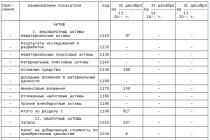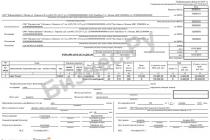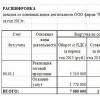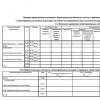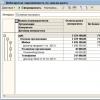One of the important indicators that must be regularly determined is information on the average number of employees. First of all, on its basis, an economic entity is assigned to one of the business groups, in accordance with the number of people working there. Therefore, the headcount is indicated on many reports submitted to the Federal Tax Service and statistical authorities.
The average headcount is information about the average number of employees working in the company in a certain period of time.
This indicator must be calculated in each business entity that attracts employees. At the same time, when determining it, you can take completely different periods of time - one month, three (quarter), the whole year, etc.
However, despite the period for which it is necessary to make the calculation, the methodology for all cases is the same.
Attention! Entrepreneurs do not have to send information about the average number of employees. However, this rule only applies if the IP does not involve hired employees. This provision has been in effect since 2014.
One of the main ways to use the indicator is to divide business entities according to their size. The average headcount is one of the criteria that allow the application of preferential taxation regimes provided for by law. Also, on the basis of it, many other important statistics are calculated. For example, the average salary.
Deadlines for submitting the report on the average headcount
Based on the situation in which the report on the number is submitted, there are three terms:
- On a general basis for operating organizations and entrepreneurs - until January 20 of the year following the reporting year. If this date falls on a weekend or holiday, the change is moved forward to the next business day;
- The average number of employees when opening an LLC is also required to be calculated, as well as for long-term ones. Only in this case, according to the law, it is necessary to make a calculation and provide information before the twentieth day of the following month after entering the information into the Unified State Register of Legal Entities. After that, new organizations must, on a general basis, submit information on the average number of employees at the end of the year. Thus, form KND 1110018, containing the average number, is submitted by them twice in the first year.
- If a business or a legal entity is closed, the report must be sent on the day of exclusion from the register.
Where is the reporting
The legislation determines that a report on the average number of organizations is submitted to the Federal Tax Service that operates at their location. If the company consists of external divisions or branches, then all data is combined into one report sent by the parent company.
Entrepreneurs who have employees must send a report form KND 1110018 to the address of their registration or registration.
Important! If an entrepreneur is engaged in activities on the territory of a different Federal Tax Service than the one where he was registered, then he still needs to submit information about the average number at the place of receipt of registration documents.
Ways to submit information
This report can be generated and sent both on paper and using special computer programs.
There are several ways in which you can send a report to the Federal Tax Service:
- Submit the completed paper form to the inspector on your own, or ask your representative for whom the corresponding power of attorney has been issued. At the same time, the report itself must be drawn up in two copies, one of which is marked with acceptance, and the second remains with the Federal Tax Service;
- By registered letter with the attachment described;
- With the help of a special communication operator in electronic form. For this method, you must have a qualified electronic signature.
In some regions, when submitting a paper version, the inspector also asks to provide a USB flash drive with a report file recorded on it.
Form and sample report on the average number of employees in the form of KND 1110018
2017 free download in Word format.
In Excel format.
In PDF format.
How to fill out a report in the form of KND 1110018
Entering data into the report form KND 1110018 is simple. However, it is first necessary to calculate the average number itself. More details on how to make the calculation are described below.

At the top of the form, the TIN and KPP of the subject that submits the form, as well as the page number, are affixed. Since this is a title page, “001” is put here.
If the report is filled out by an organization, then its TIN contains only 10 digits, and the remaining two blank cells at the end must be crossed out. Entrepreneurs do not have a checkpoint code - they do not fill out this field, but also cross it out.
Below is the full name of the organization or full name. entrepreneur. This must be done without abbreviations.

The next step is to record the date on which information on the number is submitted:
- If the report is submitted on a scheduled basis, then January 1 of the year in which the form is submitted is usually entered here.
- If this happens due to the creation or liquidation, then the 1st day of the month that follows the month of the organization (liquidation) is indicated here.
Below, under the date, the population indicator is recorded. Extra cells are crossed out.

- If it is handed over by the head himself, then his full name is recorded, the date of departure and the personal signature of the head are put;
- If the entrepreneur submits the report, he puts his signature and the date of departure, while the full name is not filled in the field;
- If the report is sent by a representative, then full name must be entered. person, or the name of the organization, signature and date of submission. The details of the power of attorney for filing the report are also entered below. It must also be attached to the report as an attachment.
How to calculate the average number of employees
Usually, an accountant or a personnel worker is responsible for determining this indicator at an enterprise.
Due to the fact that the average population is of great importance, its calculation must be approached responsibly in order to ensure maximum accuracy of the calculation. Indeed, on its basis, for example, the right to use preferential treatment will be determined. In addition, the regulatory body itself can double-check it.
The initial information for the calculation must be obtained from documents on recording working hours, issued orders for the reception, transfer, dismissal of employees and others.
Computer programs for conducting personnel or accounting make it possible to calculate automatically. However, in this case, you still need to check the sources of information used in this case.
Step 1. Calculate the population for all days of the month
At the first stage, the responsible employee must determine the number of employees who performed labor duties in the company every day of every month. For a working day, this indicator is formed from the number of people with whom labor agreements have been concluded on that day, including all those who are on sick leave, or in.
The following are excluded from the calculation:
- Designed part-time, for whom this is not the main place of work;
- Carrying out work under contracts;
- Employees who are on maternity leave or parental leave;
- Employees whose signed agreement provides for a reduced working day. However, if a short day is defined at the legislative level, then such an employee must be included in the calculation.
For weekends and working days, the number on this day is taken according to the number of employees on the previous working day. This means that if the employment agreement was terminated on Friday, then this employee will still participate in determining the average number on Saturday and Sunday.
Attention! If the organization on that day did not have a single employee with a valid labor agreement, then the number for him is taken as “1” - in any case, it is necessary to take into account the director, who is fixed in the registration documents, even if he is not paid.
Step 2. Determine the number of full-time employees for each month
This indicator is calculated by adding up the number of employees who have contracts for each day of the month and then dividing the result by the total number of days in the month.
WorkP=(Day1+Day2+..+Day31)/Number of days of the month,
Where D1, D2, etc. - the number of registered employees on each day of this month.
For example: There are 30 days in a month. From the 1st to the 14th, 21 people worked, from the 15th to the 21st - 18 people, from the 22nd to the 31st - 19 people.
The number of employees for this month will be: (14x21 + 7x18 + 10x19) / 31 = 19.67 people.
Attention! According to the calculation rules, the final result must be rounded to the second digit after the decimal point.
Step 3. Determine the average number of part-time employees
First of all, at this stage, the number of hours attributable to the labor activity of part-time workers per calendar month is considered. At the same time, the rule that the number of hours on vacation or on sick leave is equal to the number of hours on the previous day of work applies.
After that, you can calculate the average number of such employed. To this end, the value obtained above must be divided by the number of hours of work for this month, which is defined as the product of days of work by working hours.
WORKHOURS=HOURNEP/(WORKDAY*WORKHOURS), Where
WORKCH- average number of part-time workers;
CHASnep- the number of hours actually spent on the work of part-time workers.
RABDN- the number of days of work in a month (norm);
WORKING HOUR- Full working hours. For a 40-hour week, this figure is 8 hours, for a 32-hour week, 7.2 hours are taken.
For example. Ivanova I.P. worked in July 2017 for 15 days for 7 hours. The company has a 40-hour working week, the norm of working days in July 2017 is 21 days.
Calculation of the average headcount:
(15*7)/(21*8)=0,63
In this case, the resulting value must be rounded to hundredths, using the rules of mathematics.
Step 4. Calculation of the number of all employees per month
The average number of all employees is determined by summing the obtained values of the average number of employees for each type.
A certain result will need to be rounded to a whole number, given the rule that the fractional part up to 0.5 is discarded, and more than 0.5 is considered as 1.
RABP=RABP+RABch, Where
RABM- average number of employees per month;
RABP- average number of full-time employees;
WORK is the average number of part-time employees.
For example. Based on these previous examples, we determine the average number of employees per month:
19,67+0,63= 20,3
After rounding, the result will be 20.
Step 5. Calculate the average number of employees for the entire year
The annual indicator is formed on the basis of the data obtained on the average headcount for each month of the year.
For this purpose, you need to add the average number of employees of the company for each month and divide by 12.
RABG \u003d (RABM1 + RABM2 + ... + RABM12) / 12, Where
RABG- average number for the year
RABM1, RABM2 etc. - the average for January, February, etc.
The result is rounded according to the rules of mathematics.
A feature of this calculation is that if the company did not start working at the beginning of the year, but, for example, in July, then the number 12 will still be the divisor in the formula.
Attention! Often, in addition to the annual average number, it is necessary to determine the quarterly or average number of employees for the six months. This algorithm for calculating this indicator is used, only the indicators for the required number of months are summed up, and the resulting total is divided by the corresponding number of these periods.
Penalty for not submitting information about the average headcount
Tax legislation establishes administrative liability if the KND 1110018 form was sent in violation of the established deadlines, or was not submitted at all.
A fine in the amount of 200 rubles is threatened by an economic entity for late submission of a report to the IFTS.
There is also a punishment for the responsible person in the organization for compiling and submitting, who violated the deadlines for sending the report. For him, the fine can vary from 300 to 500 rubles.
At the same time, it must be taken into account that the application of penalties to violators does not relieve the company of the obligation to send a report on the average number to the tax office.
Attention! The norms of the Tax Code of the Russian Federation provide for a repeated failure to submit this report, punishment for both the company and its responsible persons with double fines.



